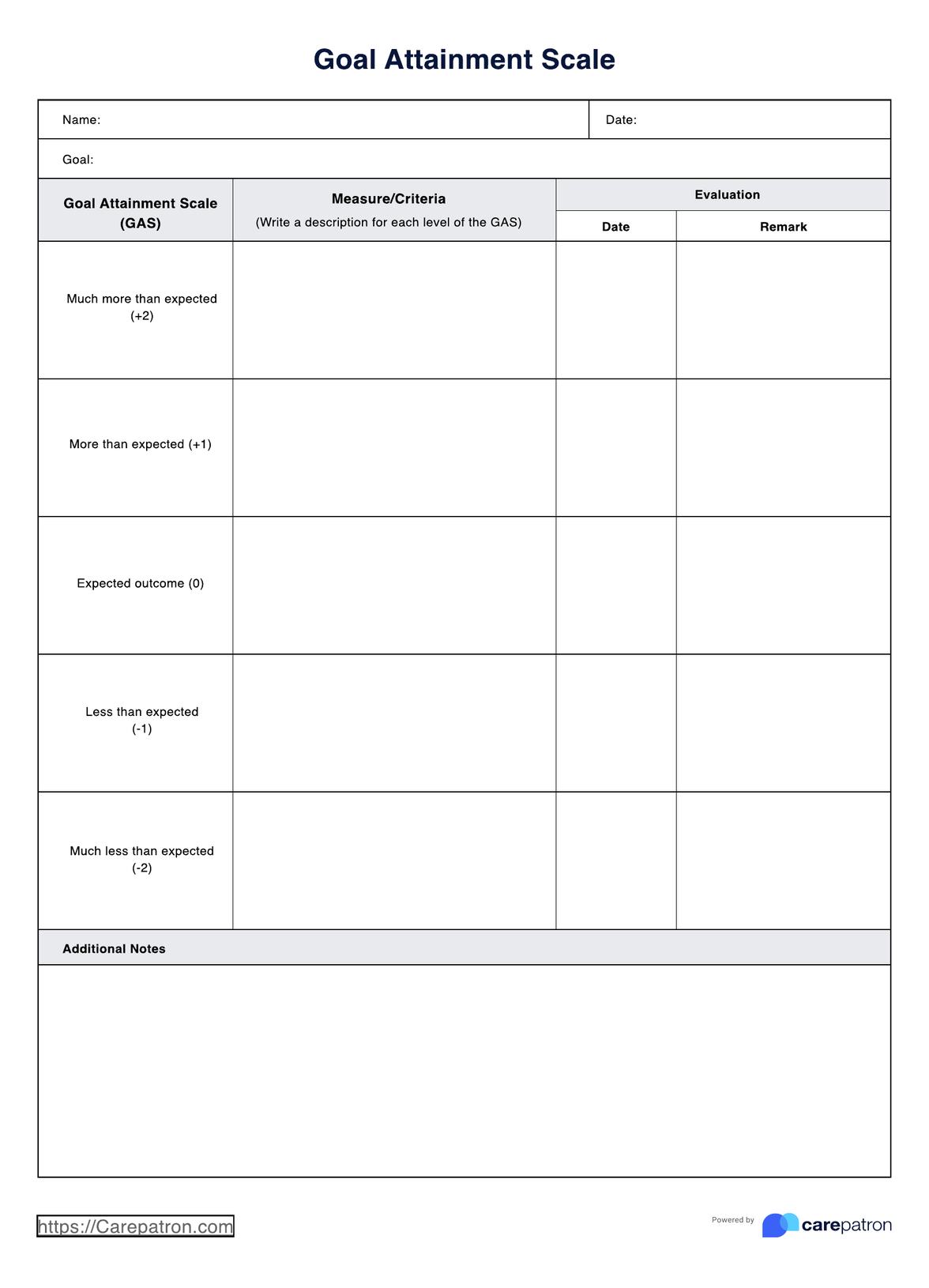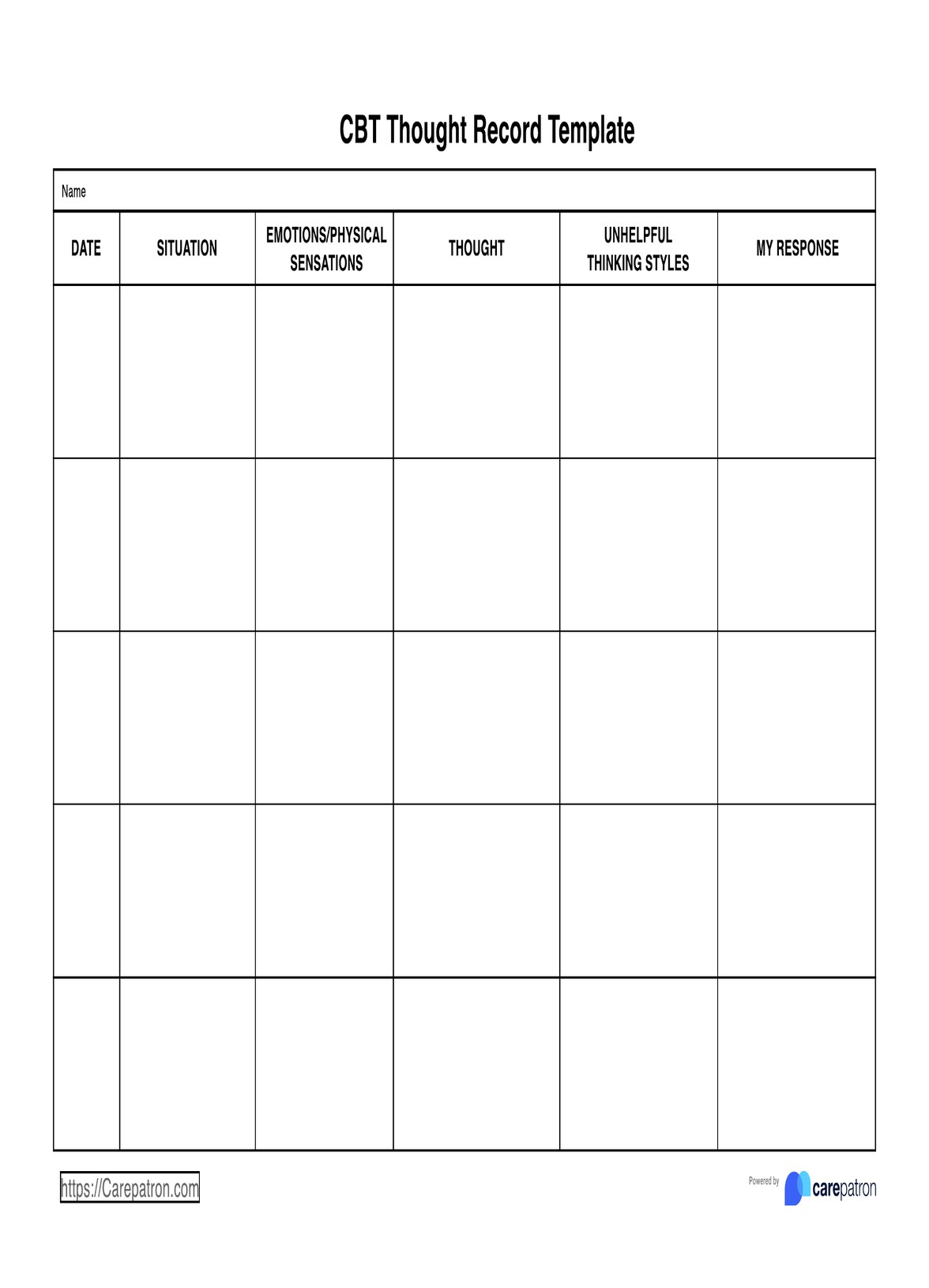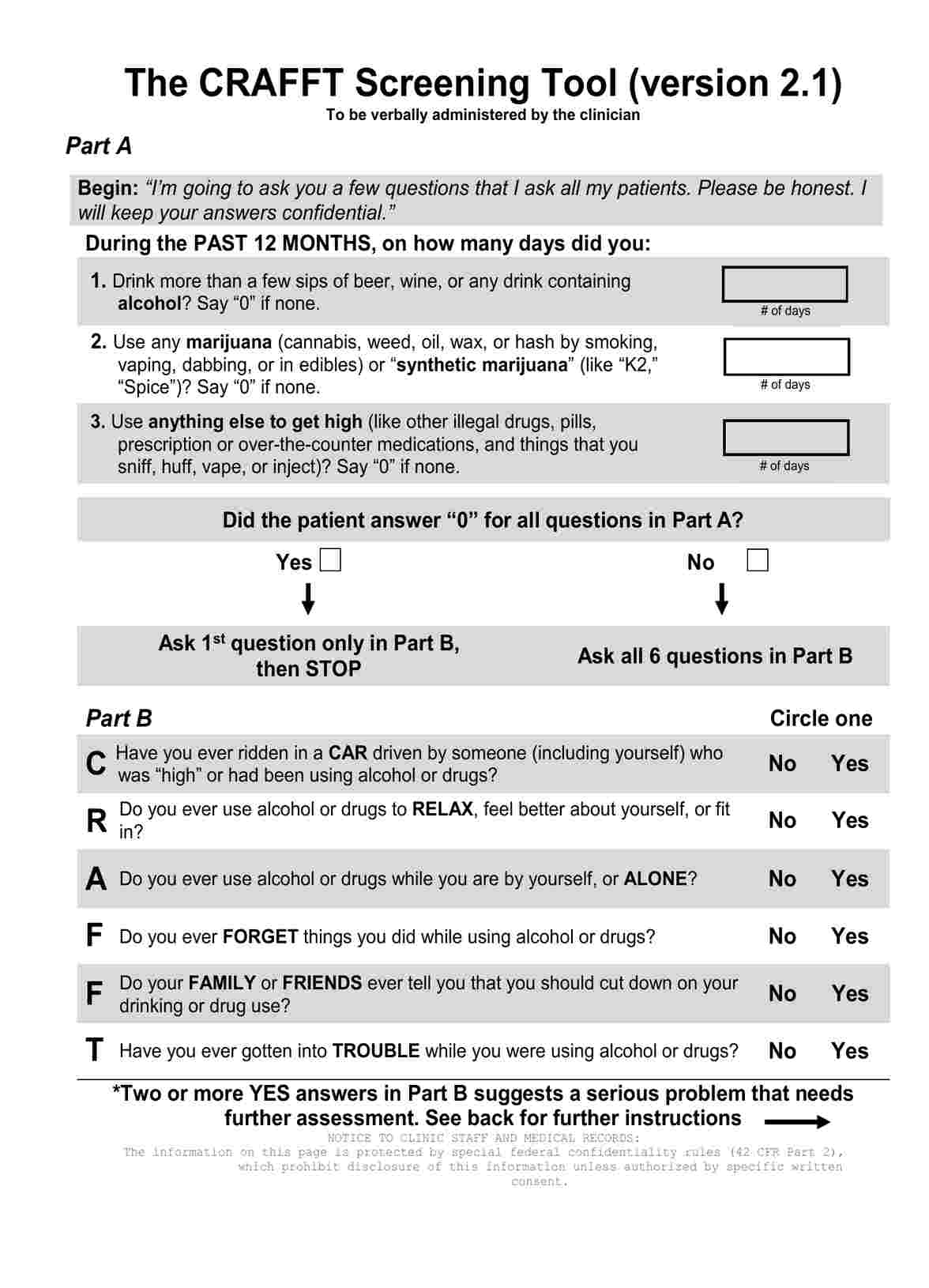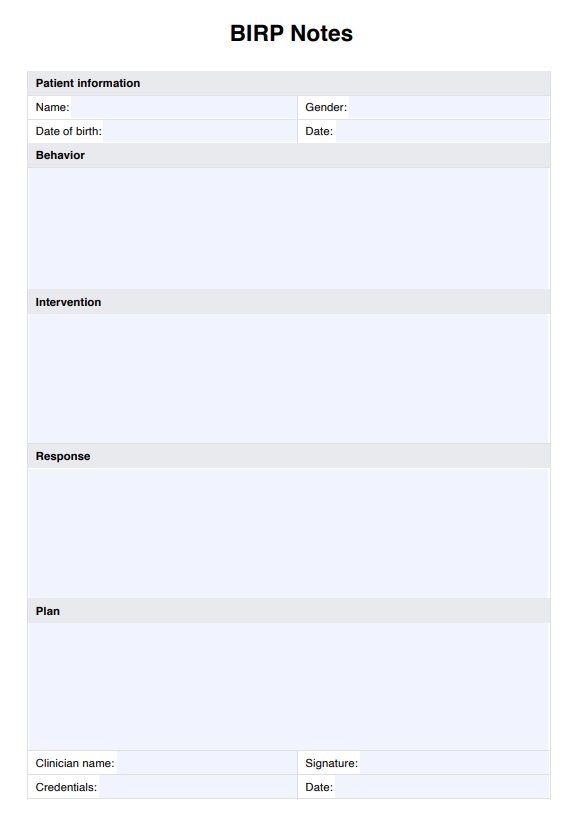Emotion Regulation Questionnaire
Discover the Emotion Regulation Questionnaire (ERQ), a valuable tool for assessing emotion regulation strategies. Download our free PDF for easy access.


What is an Emotion Regulation Questionnaire (ERQ)?
The is an invaluable tool in psychology, specifically designed to ascertain an individual's propensity towards two fundamental emotion regulation strategies: cognitive reappraisal and expressive suppression.
Developed by psychologists James J. Gross and Oliver P. John, the ERQ takes the form of a ten-item self-report scale, inviting respondents to reflect on their habitual emotional responses.
Cognitive reappraisal, the first of the two strategies, refers to reframing one's perspective on an emotion-inducing situation to alter its emotional impact. For instance, if you're anxious about public speaking, you might use cognitive reappraisal to reinterpret the situation as a valuable opportunity to share your insights, reducing your anxiety. This strategy is mental because it involves thought processes, and it's a form of regulation because it modifies the emotional response to the situation.
Expressive suppression, in contrast, is a strategy of inhibiting or concealing the outward signs of inner emotions. To continue with the public speaking example, you might feel highly nervous but use expressive suppression to hide your anxiety and appear calm. While suppression also regulates emotion, it differs from reappraisal by targeting the external expression of emotion rather than the internal experience.
In sum, the ERQ sheds light on our natural ways of dealing with emotions, thus serving as a springboard to better emotional health, improved relationships, and overall well-being.
If you want to teach your clients Emotional Regulation skills, check out this video:
Emotion Regulation Questionnaire Template
Emotion Regulation Questionnaire Example
How does it work?
The process of using the ERQ starts with the individual's willingness to explore their emotion regulation strategies. Here are the detailed steps involved in using/filling the ERQ:
Step 1: Download and Print
The first step is to access the ERQ. You can download a printable Emotion Regulation Questionnaire online for ease of use.
Step 2: Understand the Scale
Familiarize yourself with the 7-point Likert scale used in the ERQ, where one represents "strongly disagree," and seven stands for "strongly agree." This scale gauges the extent of your agreement with each statement.
Step 3: Read Each Statement
The ERQ contains ten statements relating to real-life scenarios that might elicit an emotional response. Carefully read each statement, ensuring you understand what each one means. Don't rush through this process; take your time to contemplate each scenario.
Step 4: Respond
After considering each statement, respond according to your typical reaction. Remember, there's no right or wrong answer here, just your honest self-report. Indicate your level of agreement with each statement on a scale from 1 (strongly disagree) to 7 (strongly agree).
Step 5: Score
After completing all ten items, the next step is scoring. Cognitive reappraisal is measured by items 1, 3, 5, 6, 8, and 9, while expressive suppression is gauged by items 2, 4, 7, and 10. Each strategy's score is the sum of its related items. A higher score indicates a greater tendency to use that strategy.
By adhering to these steps, you can effectively use the ERQ to gain deeper insights into your emotion regulation strategies.
When would you use this Template?
The Emotion Regulation Questionnaire is a tool of broad application designed to assess two key emotion regulation strategies: cognitive reappraisal and expressive suppression. Below are four potential scenarios where you might find this tool particularly helpful:
Clinical Setting
If you are a mental health professional, the ERQ can be used to assess a client's typical emotion regulation strategies. Understanding how your client typically responds to emotional events can guide treatment plans. For instance, if a client frequently uses expressive suppression, which may contribute to anxiety or depression, you might focus on introducing and practicing alternative emotion regulation strategies.
Research Purpose
If you're a researcher studying emotional processes, mental health, or related fields, the ERQ can serve as a key data collection instrument. The questionnaire can help investigate the correlation between emotion regulation strategies and various psychological outcomes or explore how emotion regulation varies across different populations.
Workplace Training
The ERQ could enhance the team's emotional intelligence in organizational training or team-building exercises. Understanding personal and peers' emotional regulation strategies can facilitate better communication, conflict resolution, and team cohesion.
Personal Growth
For individuals interested in personal development and improved emotional well-being, using the ERQ can increase self-awareness regarding emotion regulation. Recognizing one's patterns can be the first step in making conscious changes towards more adaptive emotion regulation strategies.
Benefits
The Emotion Regulation Questionnaire (ERQ) brings our understanding of personal emotion regulation mechanisms to the forefront, illuminating how we habitually deal with our emotional responses.
1. Greater Self-awareness
Completing the ERQ encourages introspection about how you manage your emotions. This process can lead to increased self-awareness, an essential component of emotional intelligence.
2. Insight into Emotional Health
The ERQ can provide insights into emotional health, as the overuse of expressive suppression, for example, has been linked with increased stress, anxiety, and depression.
3. Guides Psychological Intervention
The ERQ can guide interventions for mental health professionals. A client's scores might indicate the need for techniques that promote more adaptive emotion regulation strategies.
4. Facilitates Research
In research settings, the ERQ is a valuable tool for investigating the links between emotion regulation strategies and various psychological variables, informing the understanding of emotional processes in health and disease.
5. Promotes Emotional Intelligence in Organizations
For businesses and organizations, understanding how team members regulate their emotions can guide training programs to improve emotional intelligence, communication, and teamwork.
6. Accessible and Easy-to-use
The ERQ is straightforward and quick to complete, making it a practical tool for various purposes. Moreover, being freely available allows for easy accessibility to individuals, professionals, and researchers.
Commonly asked questions
Clinicians, researchers, and individuals interested in understanding emotion regulation strategies can use the ERQ.
The ERQ can be used in clinical settings, research contexts, or for personal growth and self-understanding.
The ERQ is a self-report questionnaire. Respondents indicate their level of agreement with each item on a 7-point scale. Cognitive reappraisal and expressive suppression scores are computed separately by summing relevant things.


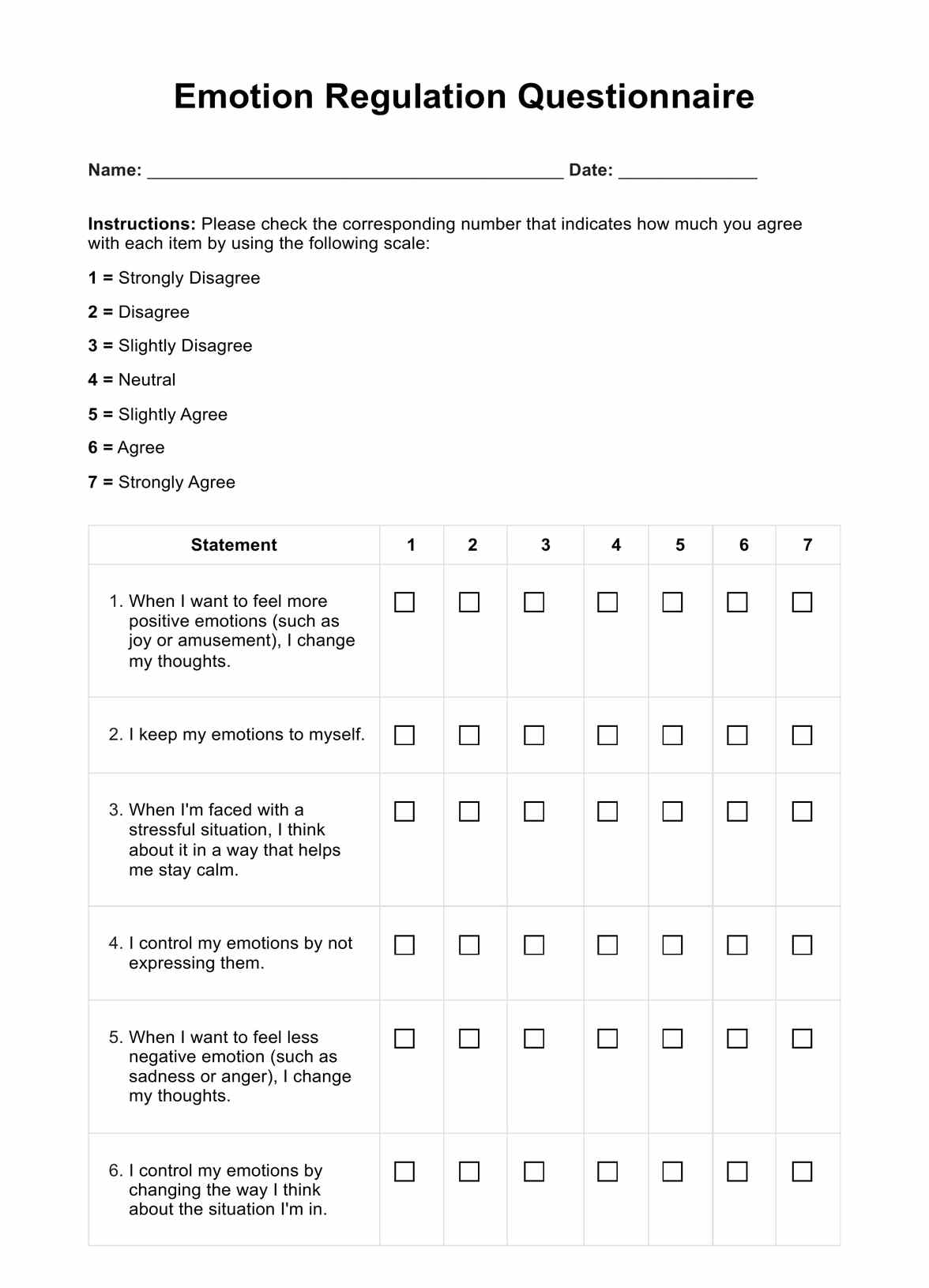
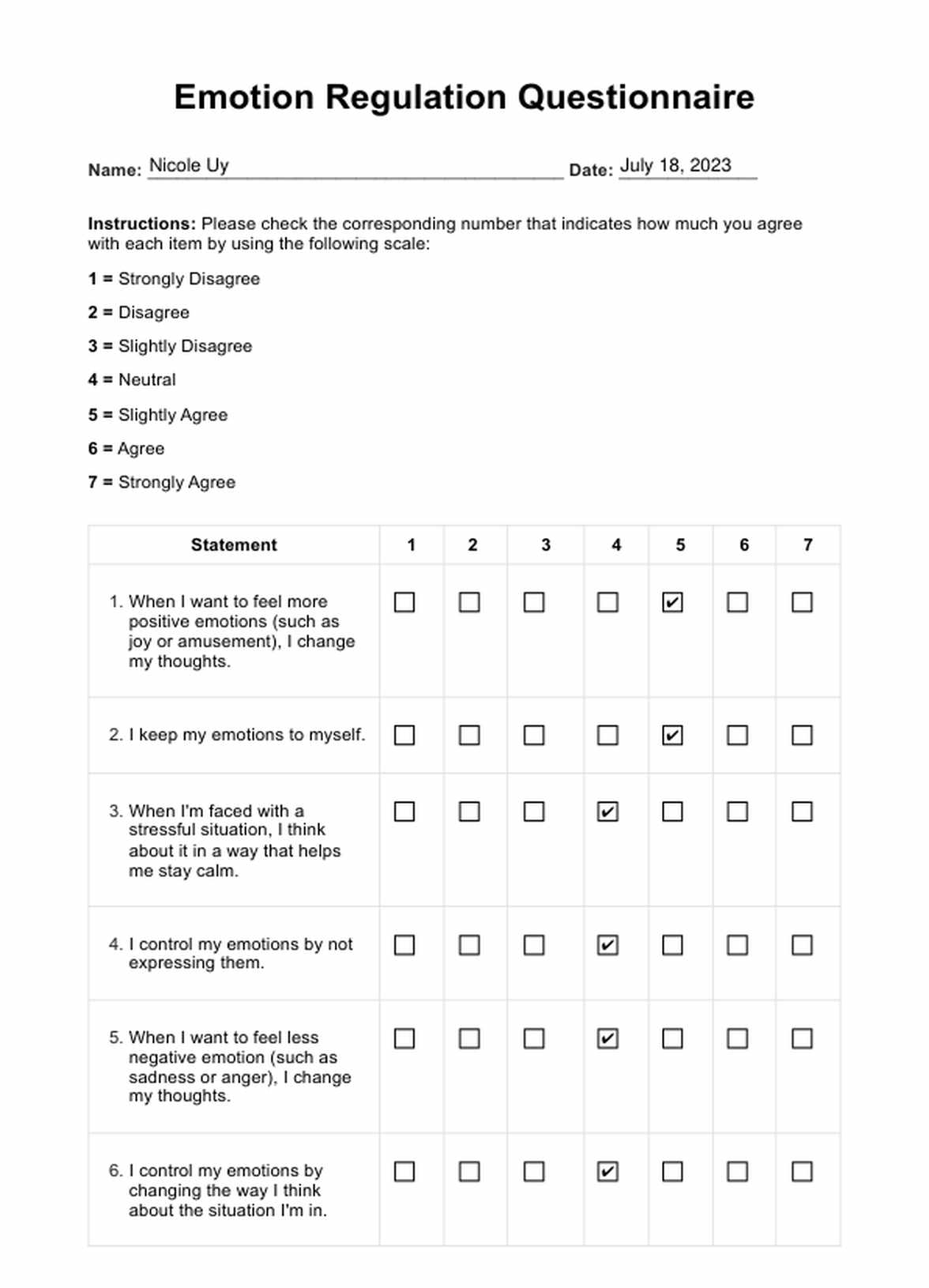

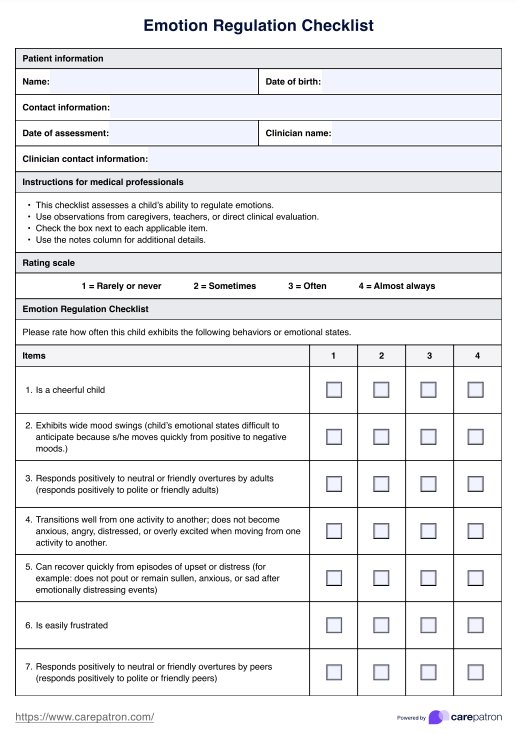
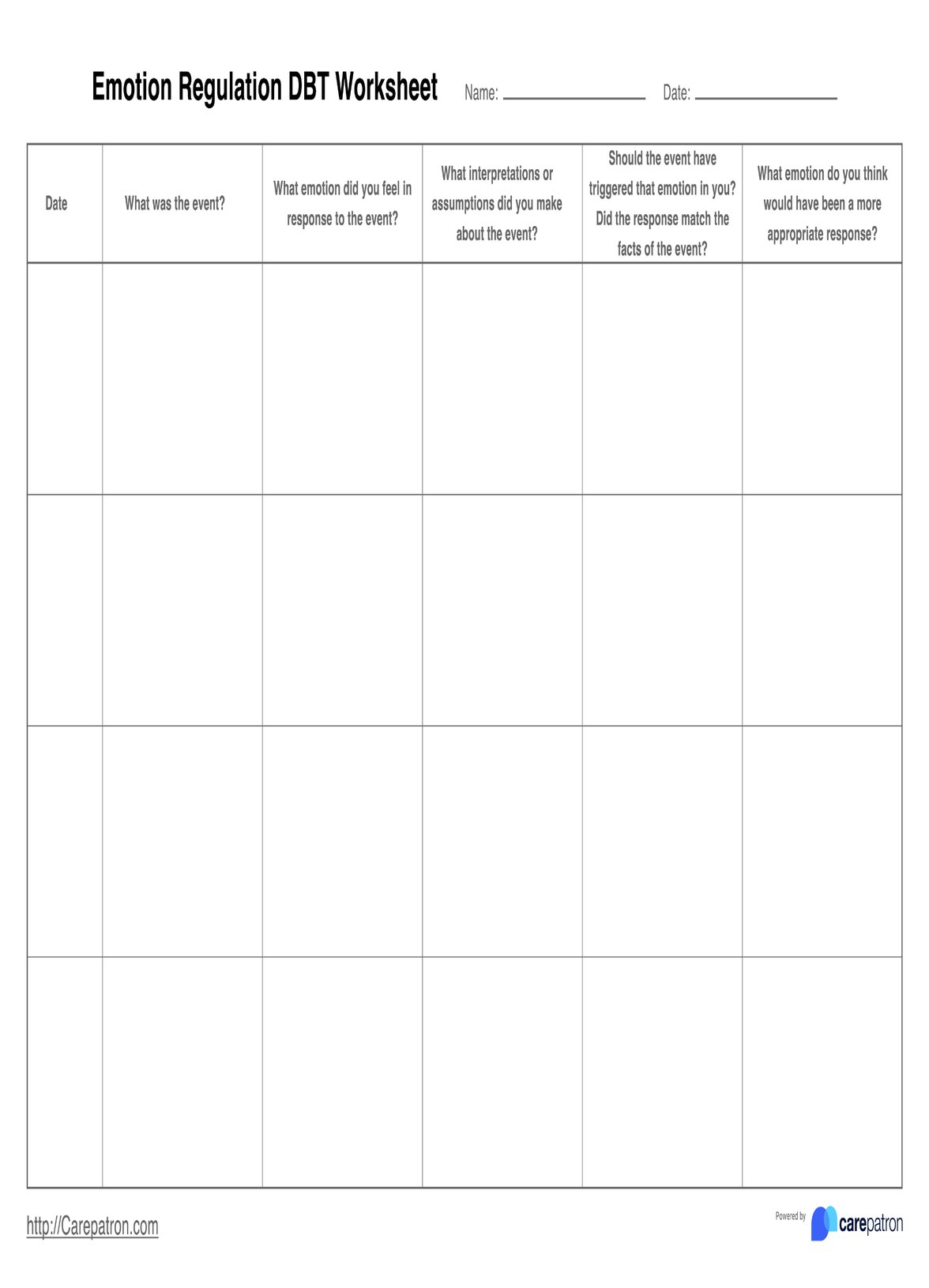
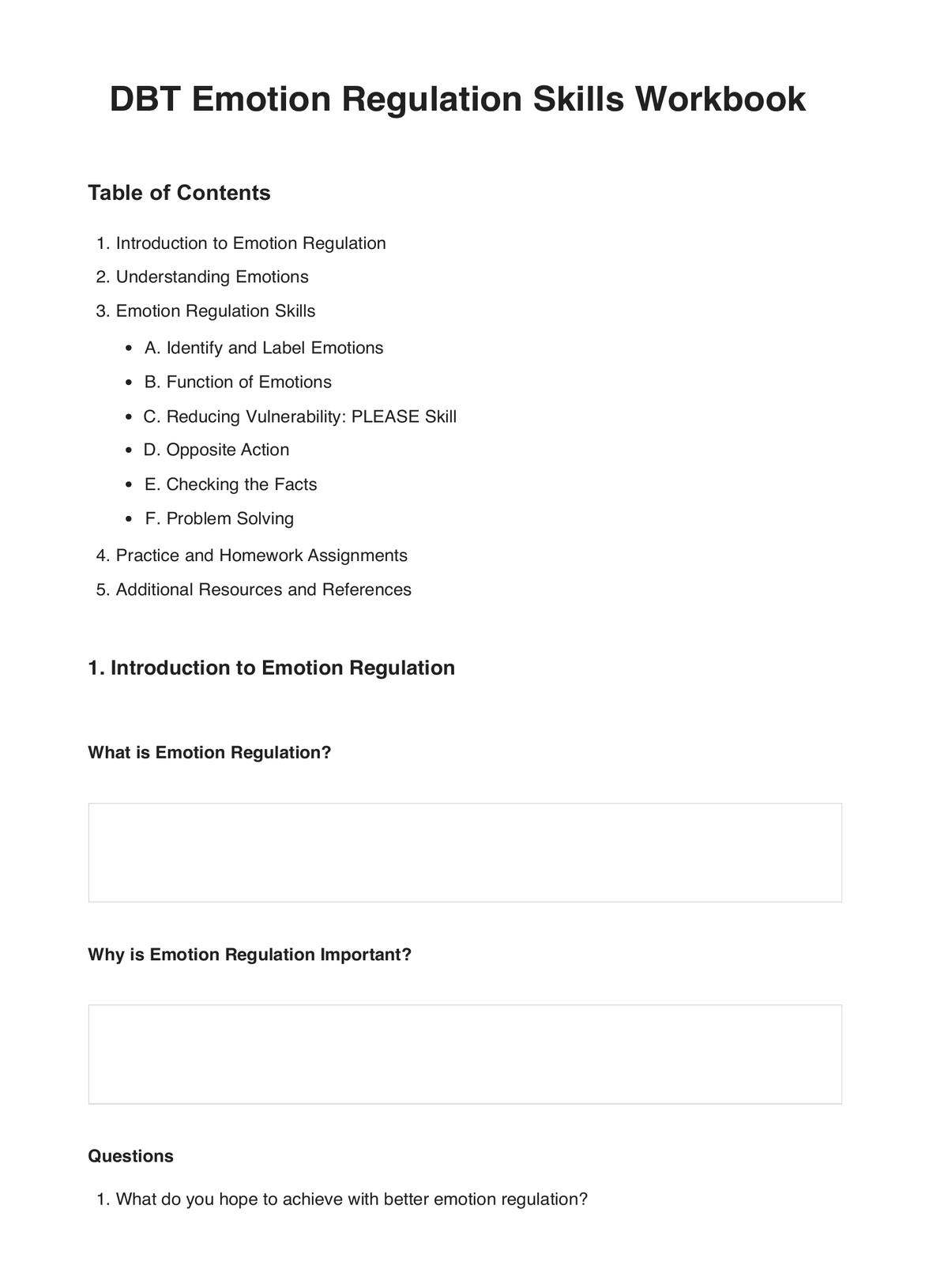














-template.jpg)




























































































